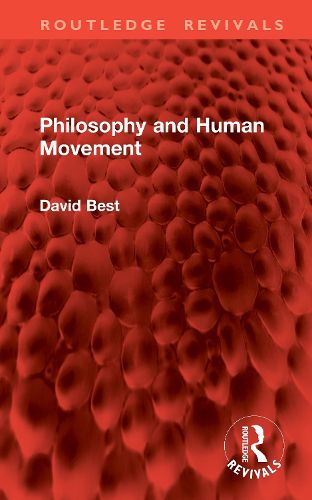Readings Newsletter
Become a Readings Member to make your shopping experience even easier.
Sign in or sign up for free!
You’re not far away from qualifying for FREE standard shipping within Australia
You’ve qualified for FREE standard shipping within Australia
The cart is loading…






First published in 1978, Philosophy and Human Movement examines the major philosophical issues in the rapidly growing field of the study of human movement, physical education, and sport and dance. Issues which start with, and grow from, the central problem of the relation of body to mind. The author's overriding aim has been to encourage clear, critical, independent thinking about the study of human movement among those with little or no background knowledge of formal philosophy. A frequent misconception among these newcomers to the discipline, when applying philosophical insights to the study of human movement is a misconception about philosophy itself and what it can achieve.
The first chapter therefore sets out to explain the character, scope and contribution of modern philosophy. Subsequent chapters consider some of the major topic of interest which have arisen in the study of human movement in recent years. This is an interesting historical reference work for scholars and researchers of sports philosophy, aesthetics, human movement and philosophy in general.
$9.00 standard shipping within Australia
FREE standard shipping within Australia for orders over $100.00
Express & International shipping calculated at checkout
First published in 1978, Philosophy and Human Movement examines the major philosophical issues in the rapidly growing field of the study of human movement, physical education, and sport and dance. Issues which start with, and grow from, the central problem of the relation of body to mind. The author's overriding aim has been to encourage clear, critical, independent thinking about the study of human movement among those with little or no background knowledge of formal philosophy. A frequent misconception among these newcomers to the discipline, when applying philosophical insights to the study of human movement is a misconception about philosophy itself and what it can achieve.
The first chapter therefore sets out to explain the character, scope and contribution of modern philosophy. Subsequent chapters consider some of the major topic of interest which have arisen in the study of human movement in recent years. This is an interesting historical reference work for scholars and researchers of sports philosophy, aesthetics, human movement and philosophy in general.